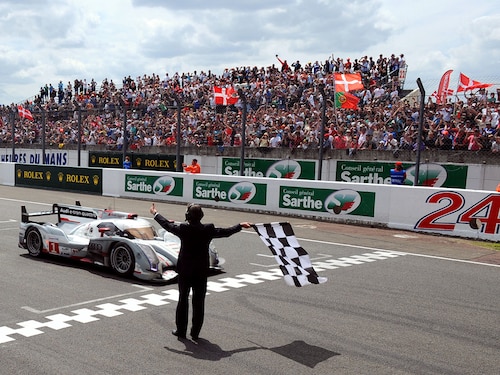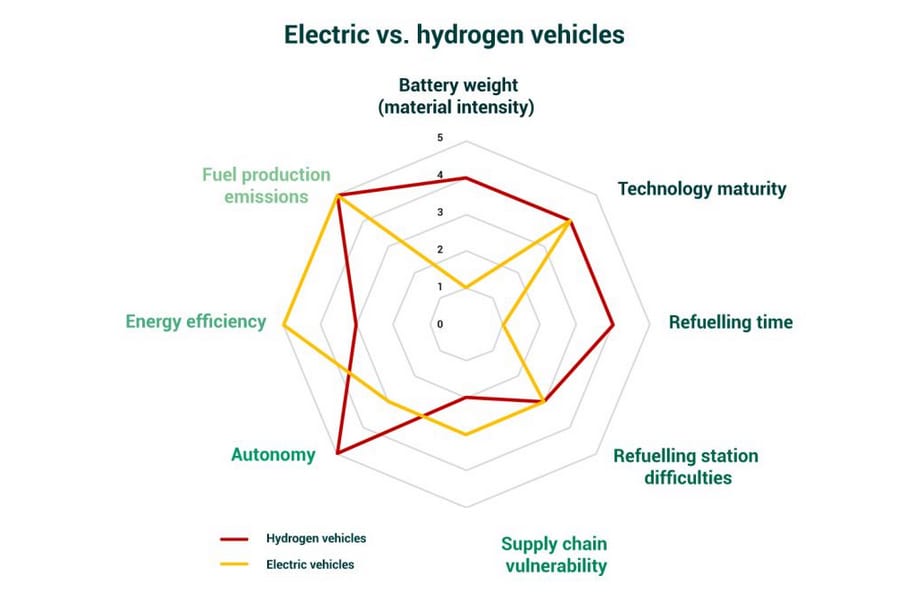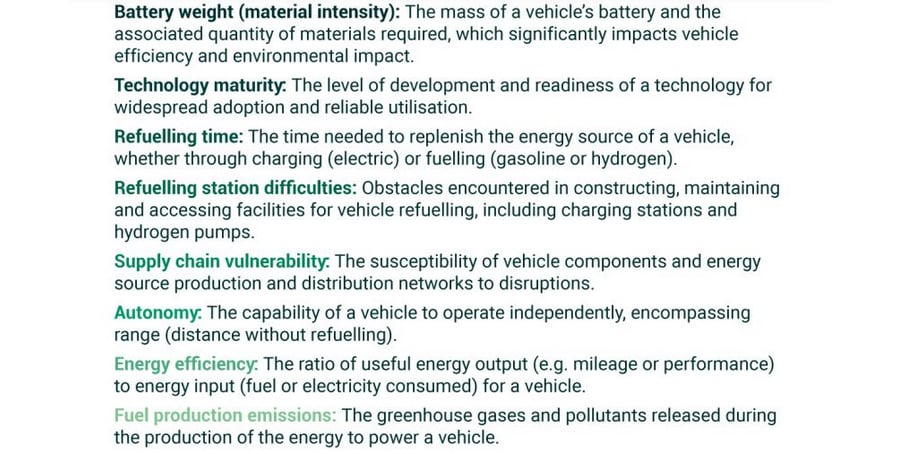Fast track to sustainable mobility
How the Le Mans motor race is paving the way for hydrogen-powered cars


Motor sports enthusiasts and thrill-seekers would be familiar with the Formula One races held around the world. But beyond fast cars, a legendary test of endurance, innovation and speed has been taking place annually in the town of Le Mans in France, capturing the world’s imagination since 1923. The 24-hour motor race sees drivers, teams and engineering capabilities stretched to their limits to win.
The 24 Hours of Le Mans is a technology laboratory in its own right, focused on automobile innovation. It has been pushing the boundaries of greener technology to accelerate the development of systems to mitigate carbon dioxide emissions, which could be adapted to everyday use on the road in the future.
The million-dollar question is: Why is Le Mans giving electric vehicles (EVs) a miss when Europe is shifting its focus to EV production and most major car manufacturers are transitioning to electric mobility? The European Union, among others, has set ambitious goals and policies for a phased transition to zero-emissions vehicles, focusing largely on EVs. Carbon dioxide emissions of all new cars and vans will be zero by 2035, and the transport sector will be climate-neutral by 2050.
An endurance race such as Le Mans embodies this real-world energy challenge. With the vision to achieve mobility with zero carbon dioxide emissions, organiser Automobile Club de l’Ouest (ACO) is paving the way for hydrogen-powered cars from 2028 at the 24 Hours of Le Mans under the project “MissionH24".
Hydrogen technology, with similar benefits as internal combustion gasoline engines, is a competitive technology for a demanding race like Le Mans. The quick refilling, high energy density, consistent performance and durability – characteristics largely lacking in EVs – meet the race’s mission of high performance and sustainability.
Hydrogen-powered vehicles may be considered “green" because of their zero emissions. However, hydrogen as a fuel is mainly produced from natural gas – a fossil fuel. On the other hand, green hydrogen, a low-carbon hydrogen, is produced via electrolysis using renewable energy. Similarly, nuclear energy can also serve as a low-carbon source for hydrogen production through electrolysis, to produce what is known as pink hydrogen. Unfortunately, electrolysers today are too expensive to make this development a financially attractive investment – as with many other renewable energy developments. Moreover, high-pressure storage, transportation and refuelling stations require significant investments.
On the other hand, just how green are EVs? Let’s consider the energy mix of the grid on which it is operating. Earth’s population will reach 10 billion people in 2050. There will be growing energy demand and an increasing dependence on fossil fuels, which will continue to be dominant in the total energy mix, according to an Exxon Mobil report. Since electricity distributors are more likely to allocate green electricity to companies that want to decarbonise their operations, commercial consumption such as EV fuel may be left with less sustainable options.
In addition, the lower energy density of EV batteries makes EV battery packs rather heavy. The production of these batteries demands large amounts of critical minerals such as lithium, cobalt, nickel and manganese, which originate from specific countries. The surge in demand puts pressure on mining operations and global supply chains, leading to supply vulnerabilities. On the social front, EV production requires fewer assembly workers, apart from the fact that production is dominated by China, resulting in massive job cuts in Europe and the United States.
The need for EV charging infrastructure, demands on grid capacity and time-consuming charging are other obstacles. EV companies are trying to increase battery capacity and driving ranges to reduce refuelling frequency. On the other hand, in spite of the safety, storage and transportation challenges of hydrogen-fuelled cars, safety protocols are well-known and well-defined in international safety norms. The experience with MissionH24 and its prototypes (LMPH2G and H24) demonstrates that safety issues can be overcome. Moreover, on the road, hydrogen-powered vehicles can benefit from the setup of existing petrol stations and refuelling logistics to ease technology adoption.
This raises questions on how economical, technically feasible and environmentally viable EVs are. Going by the current state of EV range, it will take a long time before we can expect an EV car in a 24-hour race.
Le Mans’ long-term vision for the world of mobility is a mix of battery and hydrogen technologies, depending on the scenario. Plug-in hybrid hydrogen cars appear to be an appealing and flexible solution, whereby short daily distances will be powered by rechargeable batteries and long-distance trips will run on hydrogen-powered combustion or fuel cell engine technology. This is a system we are already familiar with in the form of gasoline-powered hybrid cars, which have significantly contributed to the reduction of emissions in the industry.
In this hybrid concept, batteries are much smaller compared to those in EVs but with enough capacity to cover daily short trips. However, there could be trade-offs between battery and hydrogen storage, making it necessary to be open and remain pragmatic, depending on the use case. For example, the requirements for heavy-duty trucks differ from those of small commercial vehicles and passenger cars.
Bernard Niclot, leader of ACO’s hydrogen programme and former technical director of the International Automobile Federation, quotes Saint-Exupéry: La vie, toujours, fait craquer les formules. He explains: “Life always makes formulas crack. The key idea is to avoid dogmatism. You cannot change energy in the mobility without considering engineering parameters and use cases. If your dream is not technically achievable or not well adapted to the real use, it is not feasible."
In Figure 1, we compare key categories for these two technologies on a scale from 1 (worst) to 5 (best).


Figure 1: Technical comparison between hydrogen and electric vehicles.
Undoubtedly, implementing hydrogen as a fuel is not without its hurdles. For most decision makers, EVs seem like the “simpler" solution within reach. But hydrogen holds a unique opportunity, especially for high-performance and long-haul transport where batteries fall short. Le Mans, specifically the H2 future category, could be a glimpse into a future that others aren’t quite ready for.
After all, the 24-hour race isn’t just about speed – it’s about energy efficiency, which is mandatory for the future of mobility, and it’s about pushing boundaries. While the world rushes towards electric vehicles, Le Mans and key automotive players such as Toyota and BMW are taking an alternative route – hydrogen-powered cars. It’s a bold move, especially when EVs dominate policies, investments and infrastructure plans. Perhaps real innovation lies not where the crowd has gathered but where simpler and most realistic testing is occurring – the Le Mans race.
The European Commission has, in the last few years, initiated incentives and investments such as hydrogen valleys and the development of H2 refuelling infrastructure on European territories. These moves signal its strategy of developing both hydrogen and EV cars. In looking ahead, we must combine business and engineering and understand these complexities to come up with a mobility solution – one based on the most sustainable and feasible emerging technologies today.
The authors wish to express their heartfelt gratitude to Bernard Niclot for providing invaluable insights that significantly shaped the direction and content of this work, and Carole Capitaine, who oversees Mission H24"s communications, for her meticulous feedback on the text and visual elements. Their contributions have been instrumental, and their support is deeply appreciated.
First Published: Apr 17, 2025, 17:26
Subscribe Now